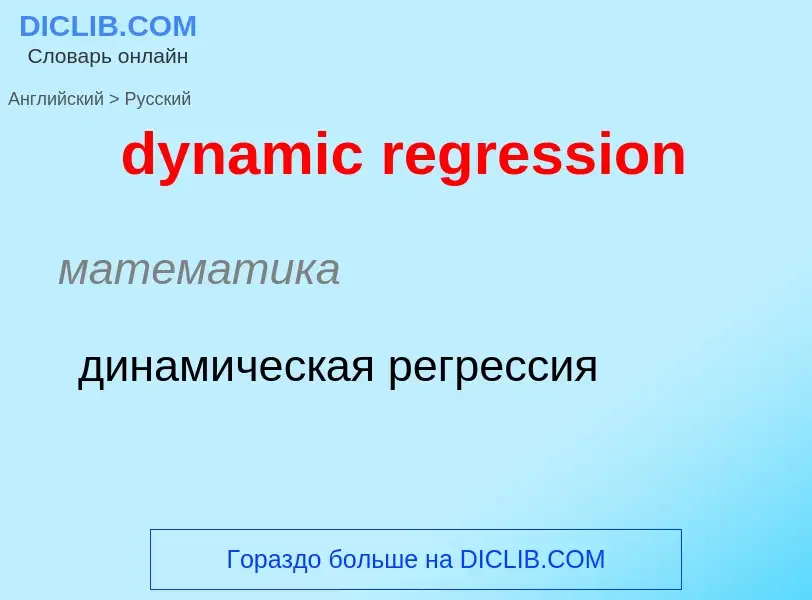Μετάφραση και ανάλυση λέξεων από την τεχνητή νοημοσύνη ChatGPT
Σε αυτήν τη σελίδα μπορείτε να λάβετε μια λεπτομερή ανάλυση μιας λέξης ή μιας φράσης, η οποία δημιουργήθηκε χρησιμοποιώντας το ChatGPT, την καλύτερη τεχνολογία τεχνητής νοημοσύνης μέχρι σήμερα:
- πώς χρησιμοποιείται η λέξη
- συχνότητα χρήσης
- χρησιμοποιείται πιο συχνά στον προφορικό ή γραπτό λόγο
- επιλογές μετάφρασης λέξεων
- παραδείγματα χρήσης (πολλές φράσεις με μετάφραση)
- ετυμολογία
dynamic regression - translation to ρωσικά
математика
динамическая регрессия
общая лексика
нелинейная регрессия
общая лексика
криволинейная регрессия
нелинейная регрессия
Ορισμός
Βικιπαίδεια
Panel (data) analysis is a statistical method, widely used in social science, epidemiology, and econometrics to analyze two-dimensional (typically cross sectional and longitudinal) panel data. The data are usually collected over time and over the same individuals and then a regression is run over these two dimensions. Multidimensional analysis is an econometric method in which data are collected over more than two dimensions (typically, time, individuals, and some third dimension).
A common panel data regression model looks like , where is the dependent variable, is the independent variable, and are coefficients, and are indices for individuals and time. The error is very important in this analysis. Assumptions about the error term determine whether we speak of fixed effects or random effects. In a fixed effects model, is assumed to vary non-stochastically over or making the fixed effects model analogous to a dummy variable model in one dimension. In a random effects model, is assumed to vary stochastically over or requiring special treatment of the error variance matrix.
Panel data analysis has three more-or-less independent approaches:
- independently pooled panels;
- random effects models;
- fixed effects models or first differenced models.
The selection between these methods depends upon the objective of the analysis, and the problems concerning the exogeneity of the explanatory variables.

